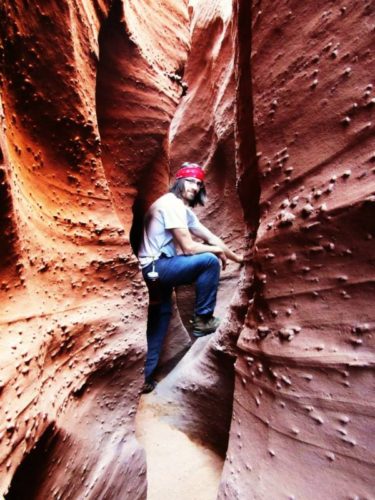
Coastal Trail Running on the Pacific West Coast: Don’t Trip!
Adventure Is Calling
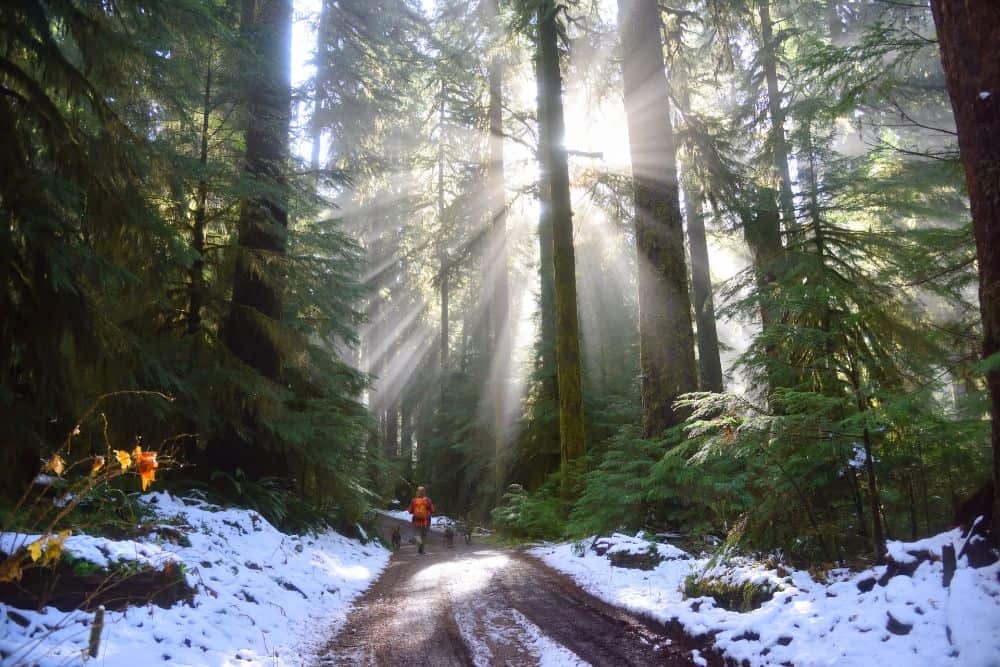
You hear birds in the trees as you slowly take a breath in the nose and out of the mouth. You hear waves somewhere far off like an oasis of sunshine and relief are welcoming you. You begin to approach your descent and the salt-watered winds brush your face making you forget about the equally salty sweat that has dried on your skin …

Guide At a Glance
- Is this author an Adventurer?
- Is this Guide based on experience?
Your Next Quest
What you need to know before you go!
Trail running, like hiking, takes you into nature where unpaved trails reside. Typically, you will find yourself running in the mountains, national parks, or lush forests.
The benefits of trail running are endless. I trail run for my mental and physical health. Driving to a trailhead early in the morning before sunrise and taking on the trail step-by-step to see the sun greet me revives the inner child in me and keeps me sane for the week to come.
There are, however, more concrete benefits.
- Running on nature trails is better for the joints than running on paved surfaces and let’s face it, it’s also a preferable alternative to the stagnant treadmill.
- Trail running is for kids and adults alike. If you are bringing the kiddos, I would recommend ages 6 and up. You will want to make sure you are choosing a trail that is comfortable for everyone in your group to participate.
- Want to bring the fur baby? Sure! Just make sure the trail you are choosing allows pets.
Trail running has increased in popularity over the years. In 2019, it was rated one of the “most popular outdoor activities amongst people in the U.S. aged six years and older, accounting for a total of 61.01 million participants.” [1]
Understandably, trail running might seem intimidating to approach but do not fret allow me to give you some tips to break into the world of trail running.
I recommend using AllTrails to find beautiful trails along the Pacific West Coast. It can be found on your device’s app store and has been an amazing resource for finding hidden gems, reading reviews, and navigating back to the trail when I lose it.
How do you go coastal trail running?
Coastal trail running breaks up the monotony of the infamous “green tunnel.” When running along the Pacific coast, you’ll encounter black sand beaches, grass-covered dunes, coniferous forests, coastal mountains, and interstitial tidal zones.
One hour, you’re crawling along a sandy beach, heels sinking deep into the soft sand. The next, you’re summiting a peak covered in ferns. It’s the Willy Wonka Chocolate Factory of trail running – every zone holds something different and wonderful!
If you can run, you can go trail running. You aren’t obligated to even run the whole time. You can walk on the up hills and jog the downhills, if you like.
Teach me your ways!
If you can run, you can trail run. But here are a few pointers for the Pacific Coast:
- Your shoes will get sandy! Just accept it. But keep some fresh socks at hand so you don’t get blisters during long rains.
- Wear full-length socks to protect yourself from plants, rocks, water and sand.
- Precipitation is to be expected. Dress in layers with a water-resistant shell for the best protection.
- Beware the tides. Some trails get covered up at high tide!
Need some inspiration?
Still undecided?
PROS
- Cardiovascular strengthening with moderate-low joint impact.
- Enjoying nature across all its biomes.
- An adventure activity that won’t break the bank.
CONS
- Nature, possibly poison oak and bugs that bite.
- Time required to investigate and learn about your trail.
- A very popular activity, trails might be overcrowded.
Inspire
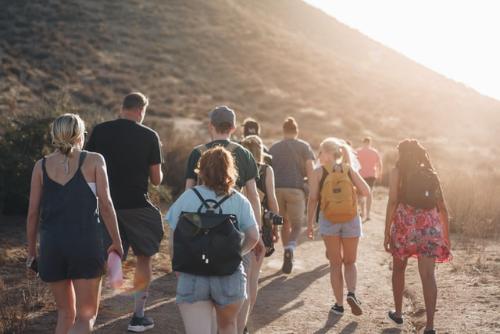
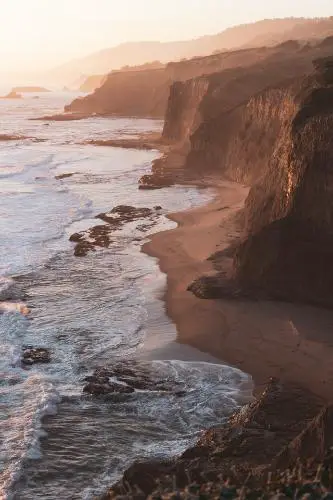

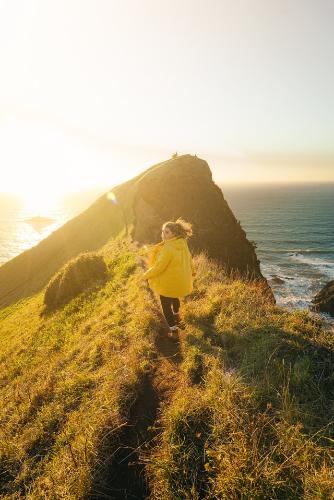
Where and When to Go?
Season
The best time for trail running is Summer through early Autumn. You will find that Washington and Oregon temperatures drop quite quickly after the summer months pass. Let me tell you from personal experience that running in the hills during heavy rain does not create the fondest memories.
Though California’s climate stays quite bearable after Autumn you will find that the mornings are quite cold and could impact your experience.
Regions
When you think of trail running you might think of high elevation or steep descents into a forest. Though that might be true there are plenty of other spaces that can expand what trail running looks like to you.

Washington
With the Olympic National Park majestically gracing this state, some might say that nature in this state is borderline heavenly.
Washington in the summer has bright humid days, conversely, if you travel more Northwest heavy downpours might meet you there.
The magnanimous Olympic National Park is 1,442 sq. miles so if you want to experience it in all its glory you need to allow yourself multiple days.
The number of trails is endless. Trail Runners, like you, have contributed to determining which trails have the most scenic views.
Here are some favorites, rated by difficulty:
- Difficult: Dungeness Spit, La Push to Hoh River
- Intermediate: Mckenzie + North Heading Hiking Trails
- Novice: Cape Flattery, Point of Arches/Shi Shi Beach, Hole in the Wall/Rialto Beach

Oregon
Let’s drop down to the Beaver State. Following the Cascade Mountains that started in Washington and end here in Oregon, you are going to find yourself in a slightly cooler environment but the precipitation from the Pacific Ocean persists.
- Difficult: Tillamook Head Trail
- Intermediate: Neahkahnie Mountain
- Novice: Saddle Mountain, Cape Lookout

California
The Sunshine state dominates the number of national parks in one state, the total being 9, you can find plenty of trails whether you find yourself in Northern, Central, or Southern California.
With that being said, trails are plentiful (read Best Runs California Coast) for the top coastal trail runs that cover the coast of California from top to bottom.
There is also an amazing resource that has user-generated contributions and ratings It is called the Trail Runners Project.
Essential Outdoor Skills
What outdoor and survival skills should I master before embarking?
Extensive outdoor skills are not necessary for Trail Running; however, I would recommend brushing up on some very basic skills to maximize your preparedness.
- Basic navigation skills such as reading a map or compass
- Treating minor injuries. applying moleskin, dressing blisters, protecting a rolled ankle
- Encountering local wildlife
“I Run Far” has a dependable reference sheet of how to remain calm and precautionary steps when running into some of the popular wildlife you might encounter: What Every Trail Runner Need To Know About Time In The Wilderness.
Numbers to remember
Safety & Risk
Is this adventure for you?
Though your safety is rarely compromised during this activity that does not mean that it doesn’t occur. Rolling your ankle, tripping over rocks, getting turned around, and of course, the miserable chafing of your skin are some of the things you might encounter while on your adventure.
A lot of these mishaps can be avoided if you research your trail thoroughly and pack preventative essentials.
- Short-run – Quality trail shoes, bug spray, moleskin
- Long run – Headlamp, poles, space blanket, lighters and matches, and a whistle
- Watch the tides and the weather!
- Tape your ankles to prevent sprains
- Tell someone else where you're going! Give them a deadline for summoning help.
DO'S
- Carry a compass or map of the trail
- Have an escape plan and discuss it with the group
- Check the weather
- Pack a first aid kit for longer runs
DONT'S!
- Keep where you’re going to yourself
- Cut cross-country if you feel like you’re lost
- Go with a group you’re unfamiliar with
- Continue to trail run if the weather is not in your favor
Wildlife
What animals can I expect to encounter?
Once again, research is essential. It is important to always be respectful to the local wildlife and keep in mind that typically the animal wants to avoid conflict.
However, in the rare instance, you find yourself in a situation where you are faced with an aggressive bear or mountain lion, taking out the time to learn about what works and what makes things worse is worth knowing.
Here is a guide to help you navigate how to react when dealing with bears, snakes, and mountain lions, Wildlife Safety for Runners.
Some animals you might be lucky enough to see include:
- Roosevelt Elk
- Sea otter
- Harbor seal
- Cormorants
- Sandpipers
- Gray whales



Fitness & Training
What is the recommended level of fitness?
Trail running is appropriate for the novice runner and the seasoned athlete. Depending on what trail you have decided to do there will be some fitness requirements.
If you are just beginning your trail running journey. It is not recommended to start with a +10-mile trail. When it comes to trail running you must gradually add on mileage.
A basic running technique should be established before running such as scanning 10-15 ahead of you, swinging arms, etc.
Training and preparation exercise regimen
When gauging trail length, consider this:
- 2-5 miles: Easy
- 5-10 miles: Moderate
- 10-20 miles: Difficult
- 20+ miles: Super hardcore!
Elevation gain can turn a short trail into a difficult one! Any trail with an elevation difference of over 6% is a real puffer.
Gear Guide
What gear do I need for this trip?
Required Gear
Quality trail shoes and possibly a camelback will be all that is necessary.
Supporting Gear
- For long runs, consider a belt pack or small backpack to carry extra gear, food or water.
- A watch to measure your pace.
Accessories & Apps
- Use a GPS app like AllTrails to keep yourself from getting lost!
Finances & Budget
What are the costs associated with this adventure?
Gear & Products
Price:
Experiencing the new activity shouldn’t break the bank. You will want to purchase quality trail running shoes and a water bottle or hydration bladder backpack such as a camelback.
Food & Nutrition
Price:
For shorter runs bringing food is not necessary though you might want to bring fruit or granola. If you decide to go on a longer run, then packing high-calorie snacks or energy gels should be considered. Your budget should be no more than $40.
Transportation
Price:
Most trailheads require you to park and walk a couple of miles in before accessing the trail you are interested in. Depending on where you are driving from you will need to determine how much gas will be.
Accommodations
Price:
If you plan on camping at a national park or going on a 15 and up-mile run, then you should access the local national park website to determine a budget for accommodations or local hotels.
Miscellaneous
Savings Tips
Get a group together and split the costs per head for food, transportation, and gas. You will be surprised how many of your friends would be up for an adventure.
Insider Tips
Here's what most people don't know!
- Get on the road early to find decent parking
- Purchase any parking passes before driving to the site to ensure you can access the park
- Pack everything up the night before and double-check before leaving
- Bring a portable/solar-powered phone charger
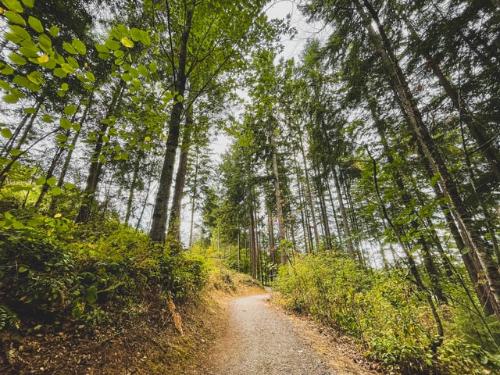
FAQ
Yes, bring the family but make sure the selected trail run is appropriate for all ages present and physical capabilities. Access the park site to determine if dogs are allowed on the trail.
I would recommend ages 6+ to trail running. Although a 5-year-old did thru-hike the Appalachian trail!
When you get to the site there are typically portable bathrooms positioned close to the trailhead. However, stopping at a public restroom is always a choice. If you need to relieve yourself while hiking it’s best to make it quick and clean up after yourself. Just watch out for poison oak.
See Notes on transportation in the Finances & Budget section.
See notes in the “Where and When to Go?” section.
Typically, you won’t find guided tours but you can find running groups such as Strava and events that you may be able to join.


